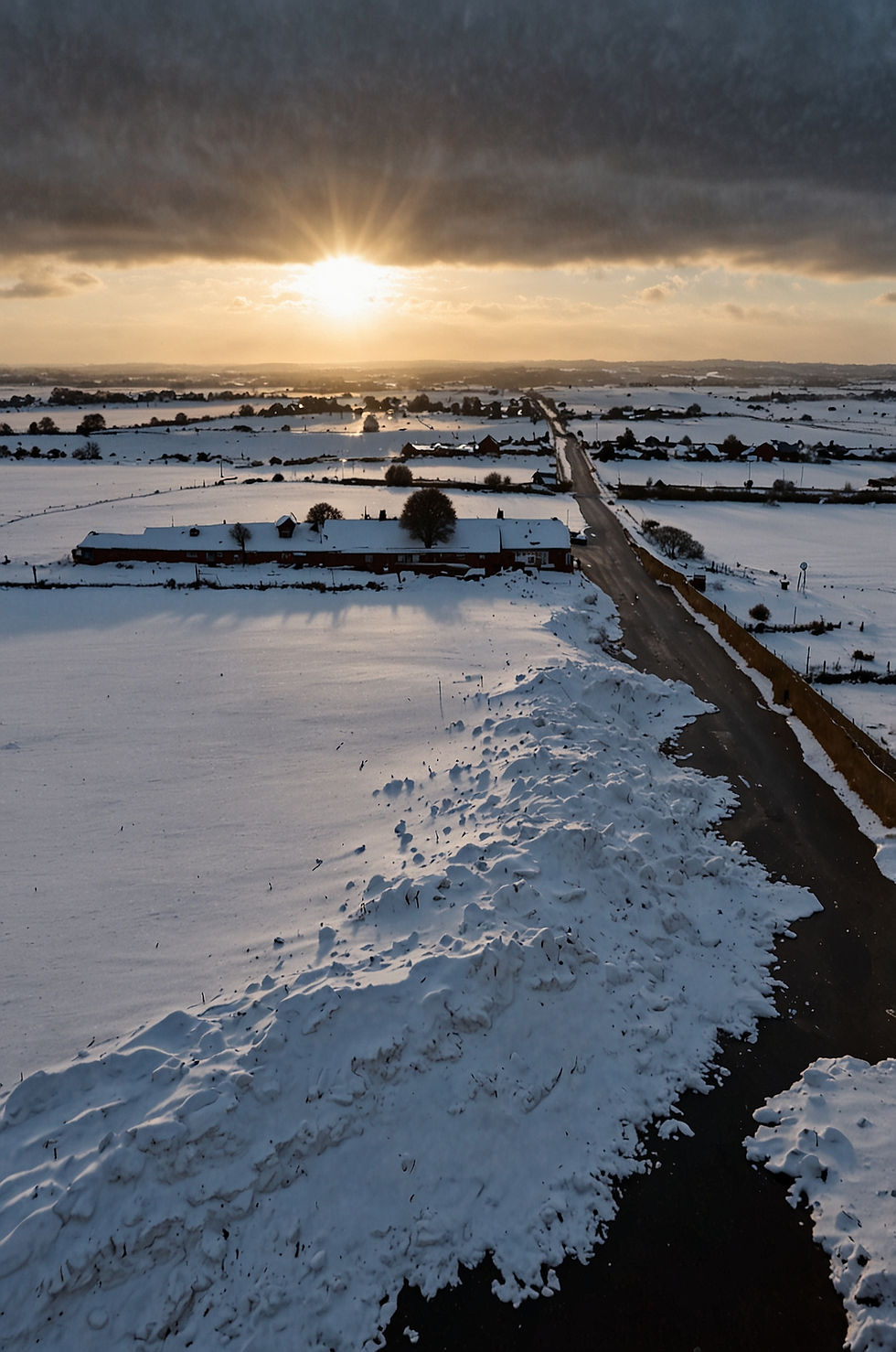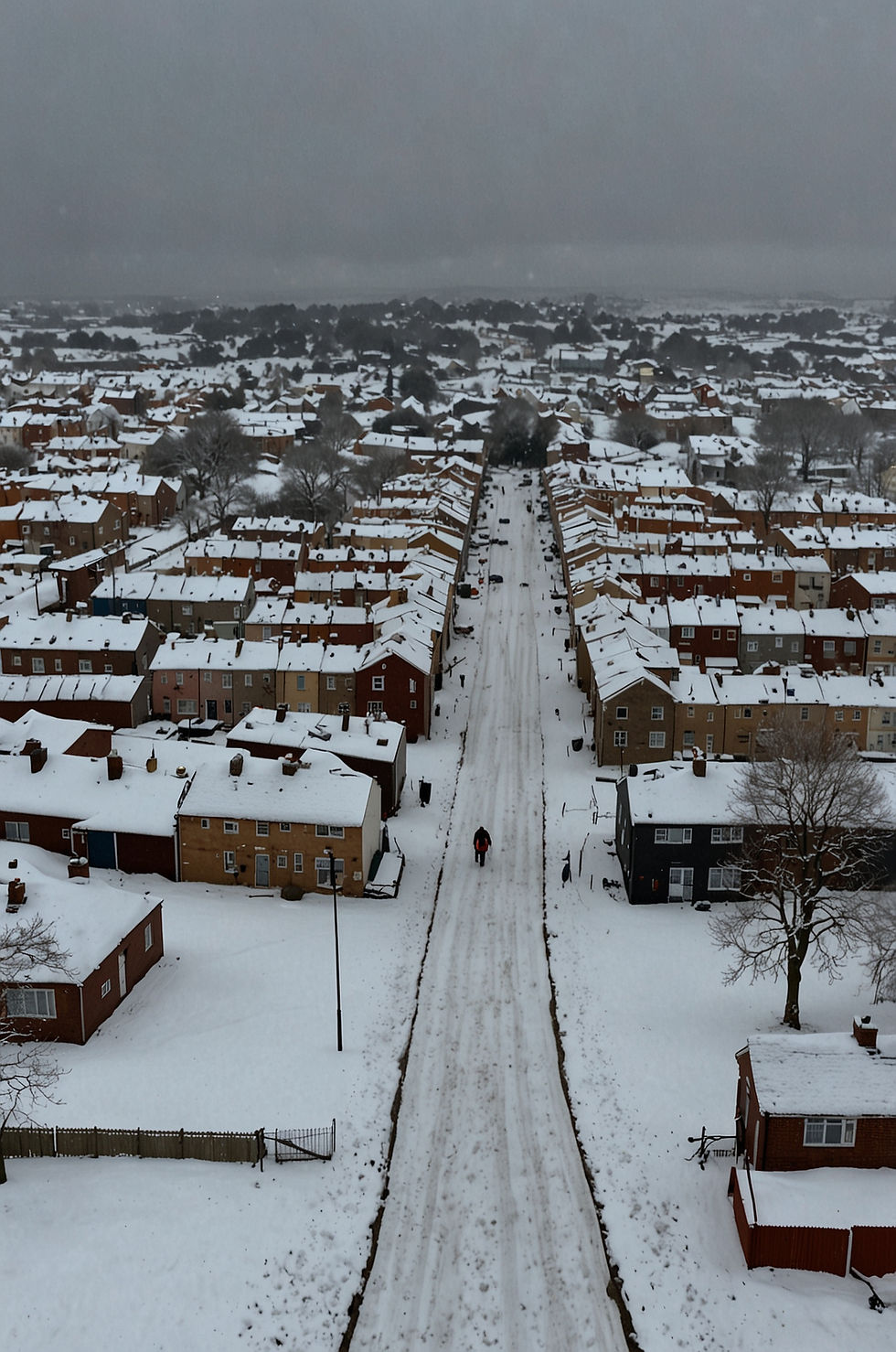Gulf Stream on Brink of Collapse
- AI it News

- Jun 23
- 4 min read
Scientists Warn – First Concrete Evidence of Ocean Circulation Breakdown Found

The whispers have turned into a roar. For years, scientists have cautioned about the potential weakening of the Gulf Stream, a vital artery in the Earth's climate system. Now, the warnings have taken on a chilling urgency. New, concrete evidence reveals that the Atlantic Meridional Overturning Circulation (AMOC), the system of ocean currents that includes the Gulf Stream, has been steadily weakening for over a century, bringing us closer to a potential collapse with potentially catastrophic consequences.
This isn't just another climate headline; it's a call to action. Research spearheaded by the University of California, Riverside, has illuminated the alarming rate at which this critical ocean current is losing strength, directly linking it to the relentless rise in greenhouse gas emissions. The implications are far-reaching, threatening to destabilize weather patterns, disrupt food security, and dramatically alter sea levels across the globe.
The Ocean's Conveyor Belt: A System Under Stress

The AMOC, often described as the "conveyor belt of the ocean," plays a crucial role in regulating global temperatures. It transports warm, salty water from the tropics northward, releasing heat into the atmosphere as it travels. This process moderates the climate of Europe, the UK colder in winter, and the US East Coast, making these regions significantly milder than they would otherwise be.
However, this delicate balance is now under severe stress. As greenhouse gas emissions continue to climb, they trigger a cascade of effects that weaken the AMOC. Rising global temperatures lead to increased melting of Arctic ice and the Greenland ice sheet. This influx of freshwater dilutes the salty water that drives the AMOC, slowing the current down.
A Cold Patch Speaks Volumes
Scientists have identified a massive, mysterious cold patch spanning 1,000 miles south of Greenland and Iceland as visible evidence of this disruption. This anomaly, which has persisted for decades and intensified with global warming, serves as a stark reminder of the AMOC's fragility.
The cold patch is not just a scientific curiosity; it's a symptom of a deeper malaise. It indicates that the northward flow of warm water is weakening, allowing colder waters to persist in the region. This disruption has the potential to trigger a runaway effect, further weakening the AMOC and accelerating the shift towards a new, potentially catastrophic climate regime.
The Potential Consequences: A Glimpse into a Disruptive Future

The collapse of the AMOC would unleash a cascade of devastating consequences:
Drastic Temperature Drops: Europe and the UK could experience plunging temperatures, potentially as low as -30°C in some areas. This would lead to widespread disruptions in agriculture, energy systems, and infrastructure.
Sea Level Rise: The US East Coast could face accelerated sea level rise as the AMOC's slowdown diminishes its ability to push water away from the coastline.
Disrupted Weather Patterns: Global weather patterns would be thrown into disarray, leading to more frequent and intense heatwaves, droughts, and floods in various regions.
Food Security Threats: Agricultural yields could plummet as climate instability disrupts growing seasons and crop production.
Ecosystem Collapse: Marine ecosystems would face unprecedented stress as ocean temperatures and currents shift dramatically, potentially leading to mass extinctions.
A Century of Decline: The Evidence Mounts
Professor Wei Liu, the lead author of the University of California, Riverside, research, emphasized the long-term nature of the problem:
"This work shows the AMOC has been weakening for more than a century, and that trend is likely to continue if greenhouse gases keep rising."
This statement underscores the urgent need for immediate and decisive action to curb emissions and mitigate the risks of AMOC collapse. The research paints a grim picture, but it also provides a crucial window of opportunity to avert the worst-case scenarios.
What Can Be Done? A Call to Collective Action

The threat of AMOC collapse is not a distant, abstract problem; it's a clear and present danger that demands our immediate attention. While the challenges are significant, they are not insurmountable. By working together, we can still avert the worst consequences and build a more sustainable future.
Here are some crucial steps that must be taken:
Rapidly Reduce Greenhouse Gas Emissions: Transitioning to renewable energy sources, improving energy efficiency, and adopting sustainable transportation practices are essential to curbing emissions.
Invest in Climate Research: Continued research into the AMOC and its dynamics is crucial for improving our understanding and developing effective mitigation strategies.
Strengthen International Cooperation: Addressing climate change requires a global effort. International agreements and collaborations are vital for coordinating action and sharing resources.
Promote Sustainable Land Management Practices: Protecting and restoring forests, wetlands, and other natural ecosystems can help absorb carbon dioxide from the atmosphere and mitigate climate change.
Raise Public Awareness: Educating the public about the risks of AMOC collapse and the importance of climate action is crucial for building support for effective policies.
Specific Actions You Can Take:
Reduce your carbon footprint: Make conscious choices in your daily life to reduce your energy consumption, transportation emissions, and waste.
Support sustainable businesses: Choose products and services from companies committed to environmental responsibility.
Advocate for climate action: Contact your elected officials and urge them to support policies that address climate change.
Spread awareness: Talk to your friends, family, and colleagues about the importance of climate action.
Educate yourself: Stay informed about the latest climate science and policy developments.
Embracing Hope: A Path Towards Resilience
The news surrounding the Gulf Stream on the Brink of Collapse and the First Concrete Evidence of Ocean Circulation Breakdown Found is undoubtedly alarming. However, despair is not an option. We must embrace hope and channel our anxiety into action. The fate of the AMOC, and indeed the future of our planet, rests on our collective willingness to act decisively. By reducing emissions, investing in climate research, and promoting sustainable practices, we can still steer ourselves away from the precipice and build a more resilient and sustainable world for generations to come. The time to act is now.




Comments